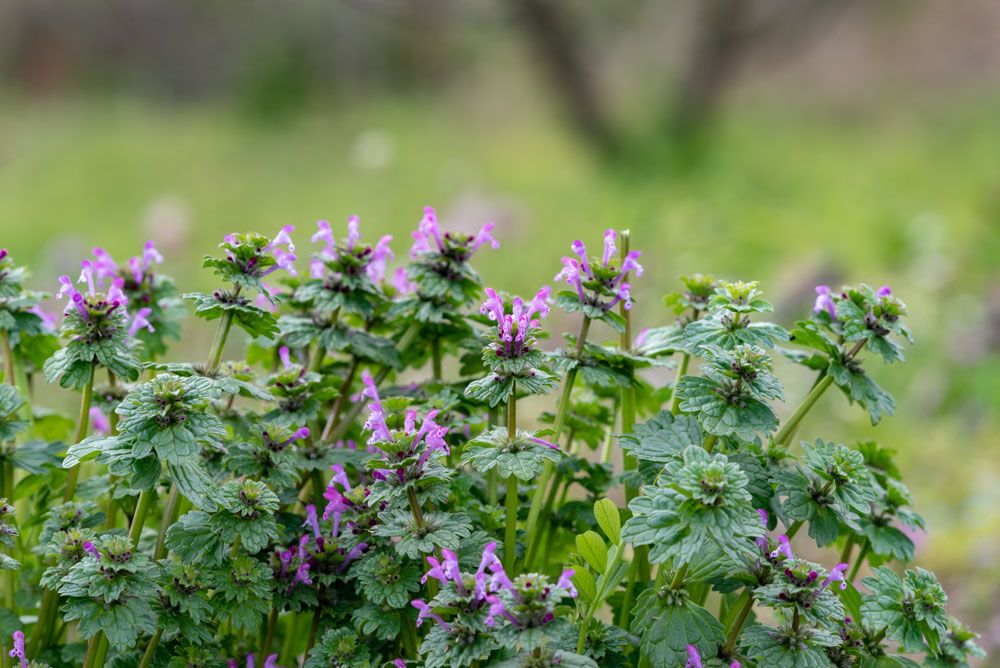
Henbit
Henbit: How to Eliminate and Control Henit in Turf
Henbit is a cold season annual plant with sparsely hairy stems that range from greenish to purple. Its opposing leaves are widely egg-shaped, with serrated edges and pronounced veins on the underside. Lower leaves have petioles, while upper leaves are sessile. It may reach a height of 16 inches and has a fibrous root structure. The blooms of Henbit are reddish-purple with deeper color in patches on the flower petals. The flowers are grouped in whorls in the top leaves and appear in the springtime.
Henbit may be found throughout the majority of South Carolina. It is especially common in open disturbed areas, such as fields and roadside ditches. It can also be seen on private lawns. Purple deadnettle is frequently mistaken with henbit. Purple deadnettle, on the other hand, has triangular top leaves on petioles that are clearly red or purple-tinted, as opposed to henbit’s upper leaves.
Identification
Henbit has square stems that are either green or purple in color and grow to be between 5 and 11 inches tall. The leaves are heart-shaped or spherical, with scalloped edges or rounded “teeth” and conspicuous veins on the undersides. In the spring, the plant begins to bloom with little lavender blooms. Henbit invades thin, weak lawns and may be difficult to eliminate once established since it thrives in any type of soil. It is frequently seen making advances beneath trees and plants in the yard, where grass struggles to thrive.
How to Kill Henbit
- To prevent henbit from developing and releasing seeds, it is critical to eliminate it before it blossoms. If you wait until it blooms before taking action, you may be dealing with this weed for several years.
- Pulling chickweed by hand is probably not worth your time. It not only takes a long time, but if you leave even a small amount of root behind, the plant will sprout and begin another attack on your grass.
- Prevent the growth of henbit seeds in your grass by using a pre-emergent herbicide. Although henbit seeds germinate in the autumn, pre-emergent weed killers generate a chemical barrier that stops henbit seedlings from sprouting.
- Henbit weeds penetrate thin lawns in shaded areas, but better lawn upkeep can keep them at bay. Water the lawn on a frequent basis to keep the soil moist, and mow it on a regular basis to stimulate thick growth.
Management
Winter annual broadleaf weeds sprout in the autumn or winter and thrive during any mild weather that occurs throughout the winter but otherwise remains dormant. They restart growth and seed production in the spring, then die when temperatures rise in the late spring and early summer. They readily infiltrate thin grass areas, especially if the soil is damp. Shade may also promote development. The greatest strategy to minimize the advance of annual winter weeds is to have a thick, healthy lawn. Select suitable turfgrass cultivars for your location, then fertilize, mow, and water properly to foster dense growth.
